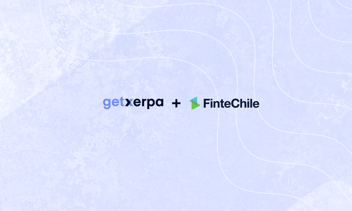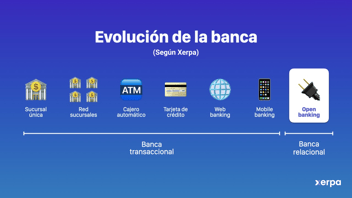Este artículo fue publicado originalmente en México Business News. Puedes leerlo aquí.
Being the customer’s primary institution used to be the main objective for banks. This means hosting their checking and savings accounts, investments, credit cards, mortgages, or any other product that would have locked in a customer with the financial institution.
Before internet banking, that wasn’t so hard. Customers would work primarily with one bank, one branch and a dedicated account executive to manage all their financial products.
Nowadays, this has changed for banks and it’s more difficult than ever to become “the exclusive” financial institution for their customers. Now, people have their money fragmented between multiple financial service providers, including fintech and other players that have recently entered in the market.
If you are a bank, your customers might be receiving their salaries in the checking account at your institution but they also have credit cards, mortgages, insurance, and investments with other financial institutions, challenger banks, and fintech. Unfortunately, you might think you own that customer but he’s having a polygamous relationship with you and other financial services providers.
How do we know this?
At Getxerpa, we analyze millions of our user’s transactions every month at different financial institutions in Latin America and we’ve identified many of them sending their money to other banks as soon as they receive their salary in their “main account.” While this is happening, their “main financial institution” is not aware and keeps thinking they own that customer but it has no potential.
The main issue is what banks are doing (or not doing) to get those customers back. Many banks are just taking the same initiatives, charging fees if you don’t have a minimum balance, offering discounts on restaurants or delivery services if they use a specific credit card, or attaching checking accounts with a loan request.
These strategies are commodities and aren’t creating real value for customers, who are looking for banks that help them feel confident about reaching their financial goals and in control of their money. On the contrary, these strategies are just making customers look for a better alternative that better suits their needs. That usually means a fintech company.
The solutions are farther from the financial industry and closer to companies like Facebook, Netflix and Spotify, where hyper-personalization and better UX is the way to acquire, engage and retain users.
Now, the main premise will be that you can’t personalize something for someone you don’t know. At financial institutions, transactional data has been accumulating in databases and servers since their very beginnings. By just analyzing a couple of transactions made by a customer, we can identify if someone is a family guy with a regular job or a digital nomad working from Bali. Before using the transactional data, it has to be unified, cleaned and enriched to differentiate an Uber ride from a gas station. Not all purchases are the same, and the sum of each one lets you know the person behind the plastic card.
It’s time to say goodbye to the traditional segmentation based on income and age, Prince Charles and Ozzy Osbourne are both 70-something, rich British guys with totally different lifestyles.
Once the data is cleaned and enriched, financial institutions can start understanding and knowing their customers better. But that’s not all. It’s time to make sure that customers keep engaging and using their products by improving their digital experiences: more use, more data, better personalization and experience. This way, financial institutions can create differentiation and retain customers. The risk for these companies of not jumping on the train of data and personalization is to see their customers moving their money and preference to other financial institutions.
Every month, it seems, the market is overcrowded with the appearance of new challenger banks. At first sight, all look the same, but after digging a little bit, there is a trend: each one caters to a specific group with super-specific needs (women's banking, kid’s banking, gig economy banking, among others).
Finally, once these institutions own a specific segment, they can increase the product offering and cross-selling of new products. The days where selling a loan or a credit card through a massive email campaign with the same offering for hundreds of thousands of customers are gone. Not only is it useless but those campaigns are just making banks lose customers' attention and trust.
The new way to sell a new product is similar to inbound marketing, where users say, “Wow, my bank really understands me.” Maybe a person is saving for a vacation, so offering her a credit card with travel benefits can make sense. Or maybe they just had a baby and offering life insurance is a nice way to show that their bank cares about them. All this in one place, inside the banking experience.
The main difference between products and services is that the first experiences wear and tear the more use it has, while services can improve with each interaction. Netflix, Spotify and Facebook improve with each movie that is watched (or not watched), with each playlist created and with each like or share. They not only improve their recommendations, they create better and more personalized products.
Banking services (aka banking products) should do the same; the more their customers use them, the better they become. That might be organizing their finances with each swipe of their credit cards, helping them pay their bills on time or offering a better investment product with each dollar or peso they deposit for their dream home.
Maybe it’s time we start talking about being the customer's primary credit card or savings account, before thinking about being their primary institution. It all depends on how well these companies understand their customers and what they are willing to do to get them back.



